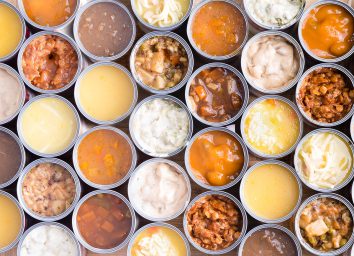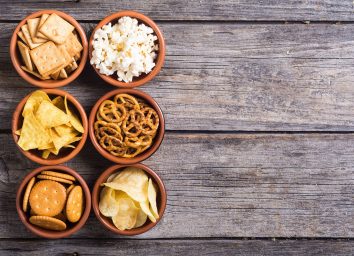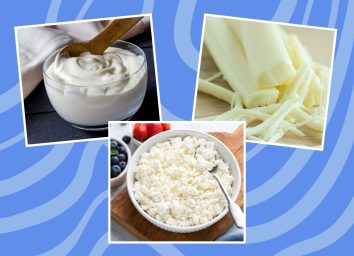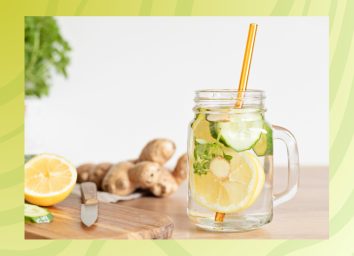Popular Foods That Have Way Too Much Salt, According to Experts
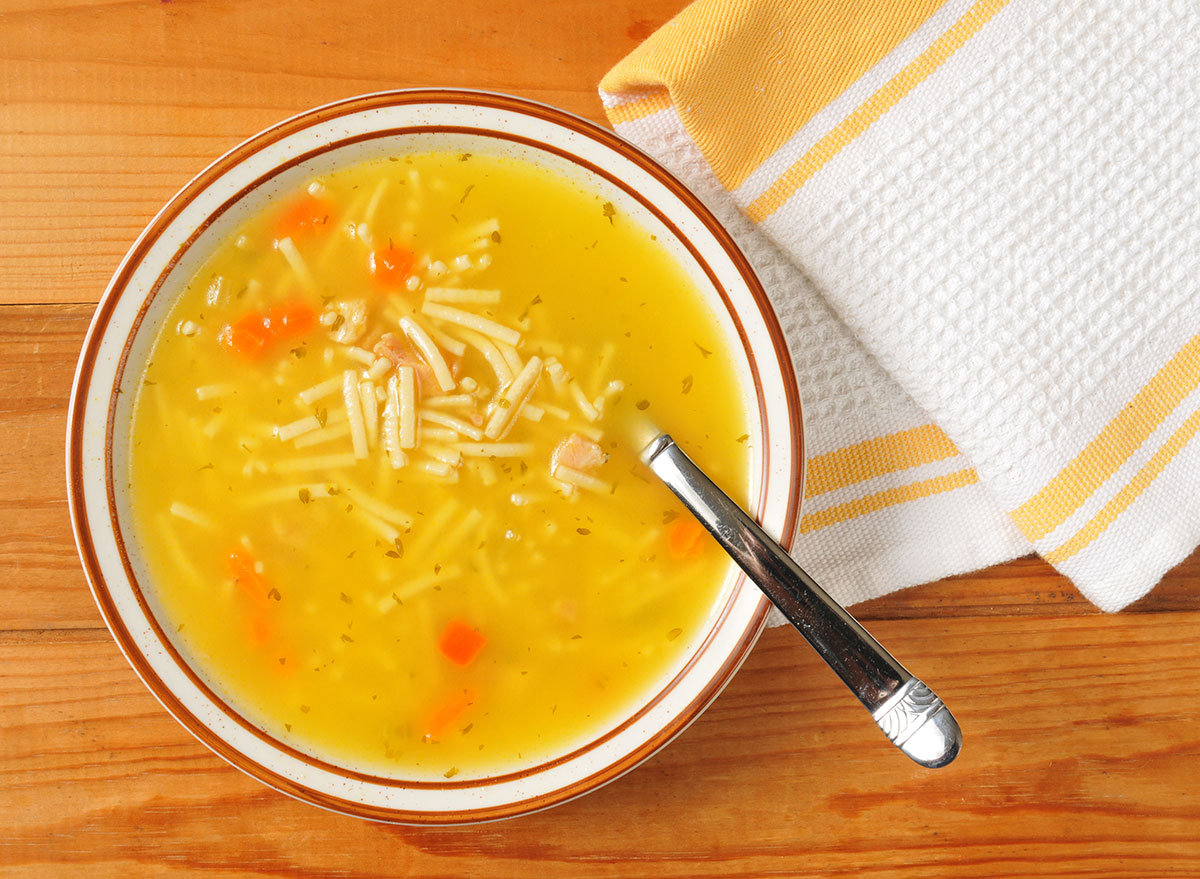
Want to experience the magic of salt and understand why we love it so and why it takes center stage in so many of our most popular foods? Sprinkle it on something to which you might not normally add salt, like, watermelon. A fine dusting of salt on watermelon flesh shifts the balance of the subtle bitter, sweet, and sour flavors of the summer fruit toward greater sweetness. Salt makes watermelon even more delicious. You'll want more and more and more.
Salt is a chef's go-to flavor improver because, in a pinch, it reduces bitterness in food, while in higher concentrations, it enhances umami, which is ideal for more savory dishes.
Salt is also an effective preservative. For that reason and its magical flavor-enhancing capabilities, food manufacturers use a lot of sodium in packaged and prepared foods. And by a lot, we actually mean too much.
As a result, Americans swallow on average about 3,400 milligrams of sodium per day. That's 1,100 milligrams more sodium daily than the Dietary Guidelines for Americans recommends! The American Heart Association (AHA) actually suggests an "ideal" limit of no more than 1,500 milligrams per day.
But try telling that to food makers who are bent on making their products tastier, rather than healthier, in order to sell more. And try convincing your tongue, which adores salt, but can be trained to appreciate less.
Here, below, are some popular foods that contain unhealthy amounts of sodium. Avoid them especially if you have high blood pressure, a risk factor for heart disease. Studies show that reducing dietary sodium can decrease blood pressure and the incidence of hypertension. Read on, and for more on how to eat healthy, don't miss 7 Healthiest Foods to Eat Right Now.
Bread & rolls
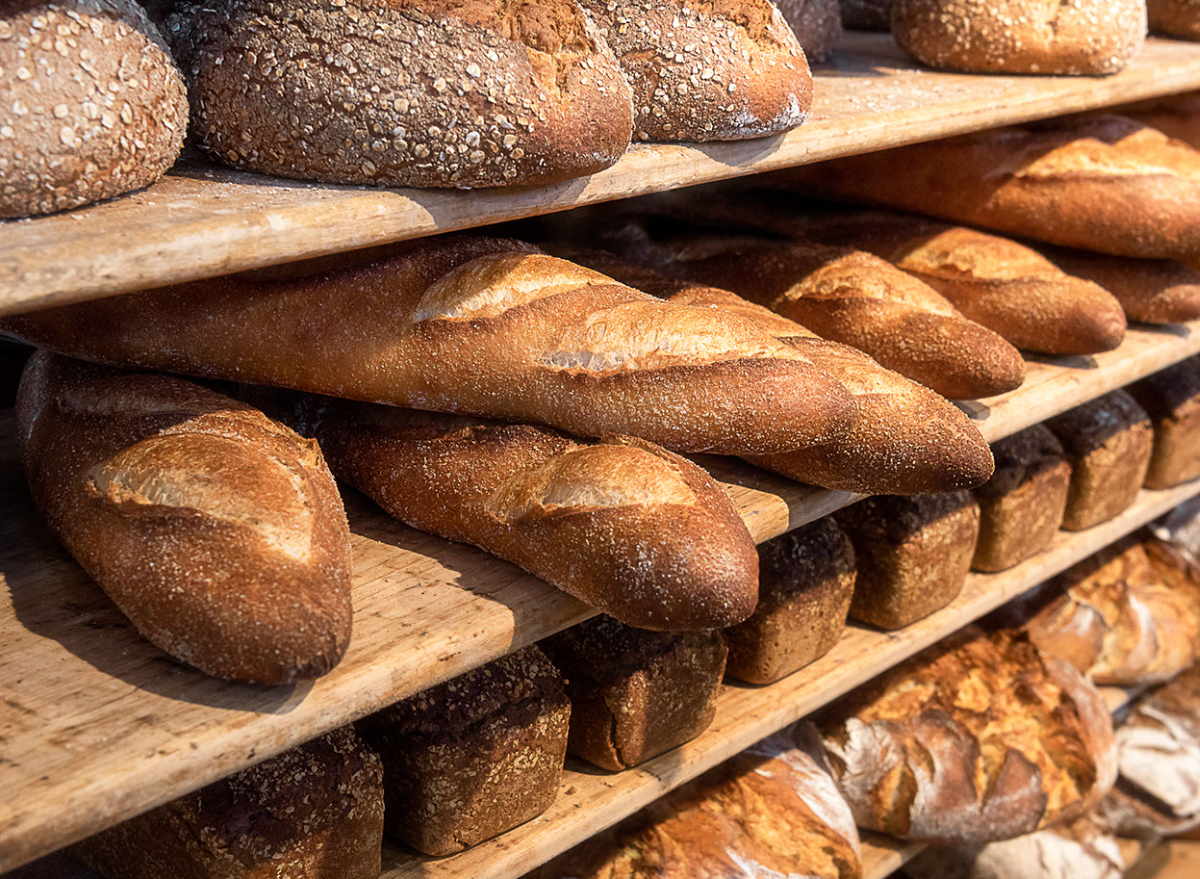
You might be surprised to find bread and rolls on the American Heart Association's "Salty Six" list of foods with the highest amounts of sodium. After all, a slice of white bread doesn't taste salty. But bread makes the AHA list because it's a food that you might eat several times a day (a sandwich gives you two servings right there) and can add up to a lot of sodium even though each serving may not seem high. A typical slice of white bread delivers 147 milligrams, so multiply that by two. Dinner rolls tend to be higher in sodium. A single serving of a French baguette has 400 milligrams of sodium.
Potato chips, pretzels, and tortilla chips
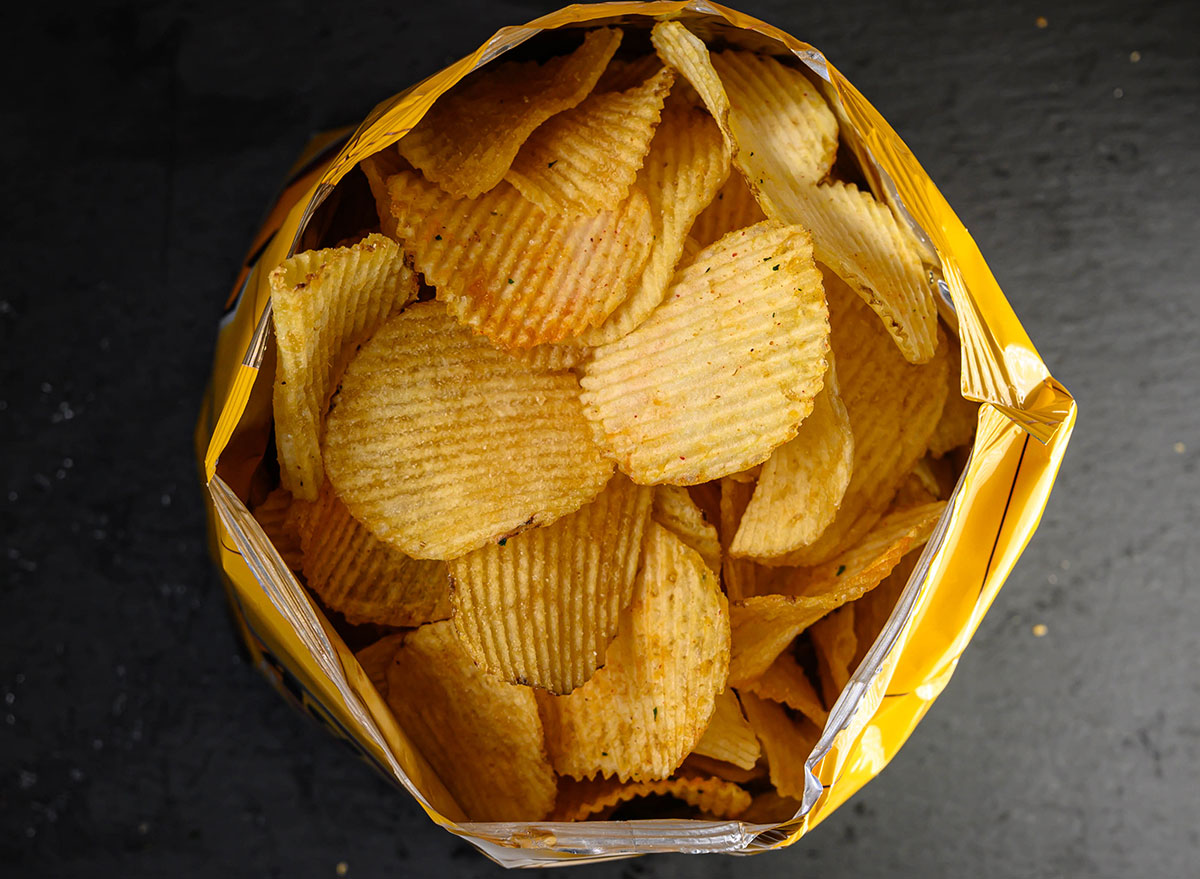
Salt is a preservative that's used in foods to prolong their shelf-life. That's why snack foods are so salty. How salty? Let's pick one of the saltiest bags. For example, Herr's Gluten-Free Salt & Vinegar Potato Chips have mouth-watering 490 milligrams of sodium per serving.
"Salty snacks like chips and pretzels can really rack up your daily salt intake," says Stacey Krawczyk, MS, RD, a consulting dietitian for the Grain Foods Foundation and President of FoodWell Strategies. For example, a serving of tortilla chips typically contains 5 times the amount of salt you get in a slice of whole wheat bread. "Instead of indulging in tortilla chips and guacamole, try satisfying those flavor cravings with a slice of avocado toast," suggests Krawczyk. "You get the crunch and creamy sensations with some added nutritional benefit from the toast while saving on the salt."
Read more: The Worst Bags of Chips You Should Never Buy
Pizza
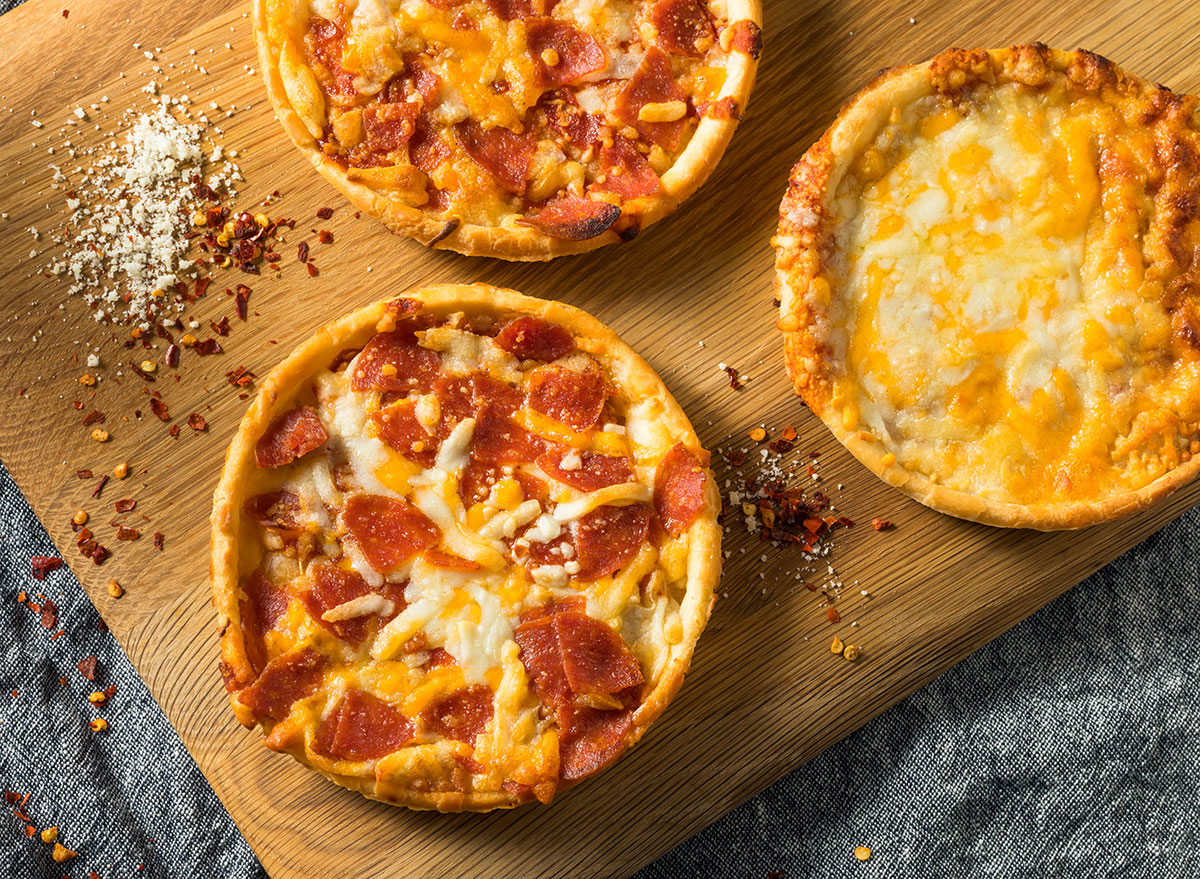
At an average of 624 milligrams of sodium per slice, eating two slices of pizza shop pie gives you about half of your recommended sodium intake for the day. And it makes sense when you think about pizza ingredients: cheese, tomato sauce, dough. And we haven't added any pepperoni yet. Pizza is the second leading contributor of sodium in the U.S. diet, behind bread, according to the Center for Science in the Public Interest.
Sandwiches
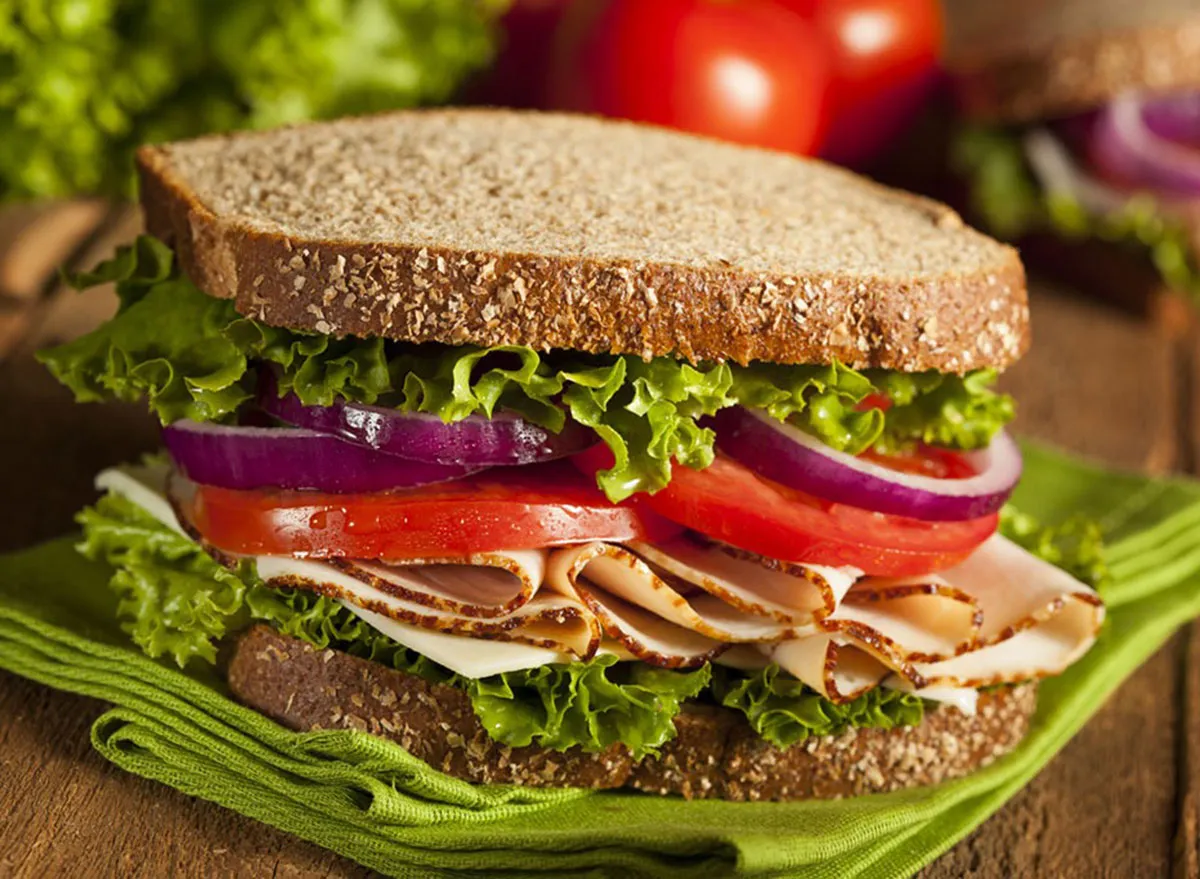
You know that cold cuts like ham, turkey, salami, roast beef, and other preserved meats are high in sodium, but the meat is just a fraction of that sandwich. The additions that bookend that meaty filling contribute sodium, too. And it adds up as this graphic from the CDC's Division for Heart Disease and Stroke Prevention illustrates. Instead, when you're shopping for deli meats, use our guide: These Are The 10 Best Low-Sodium Lunch Meats to Buy.
Soups
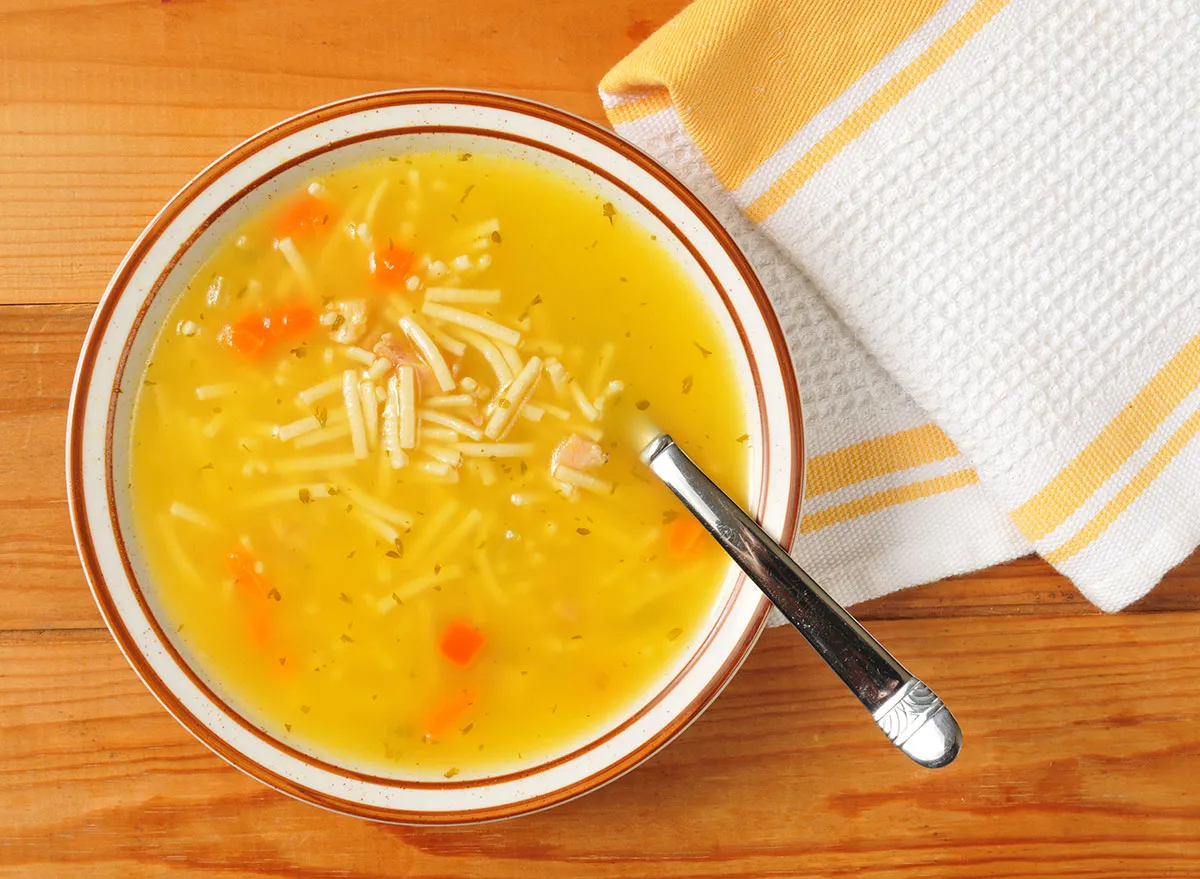
Most soups, especially canned soups, as a category generally have way too much sodium. For example, Campbell's Condensed Tomato Soup has 480 milligrams of sodium in just a ½ cup serving. Many soups and bisques contain much more. Prepared sauces are loaded with sodium, too, says Morgyn Clair, MS, RD, a nutritionist with Sprint Kitchen. "Foods like these also don't generally offer any other positive nutrition like fiber, vitamins, and protein," she says. To still sip soup without going overboard on salt, check out these 14 Best Low-Sodium Canned Soups for Heart Health, Approved by Dietitians.
Canned tuna
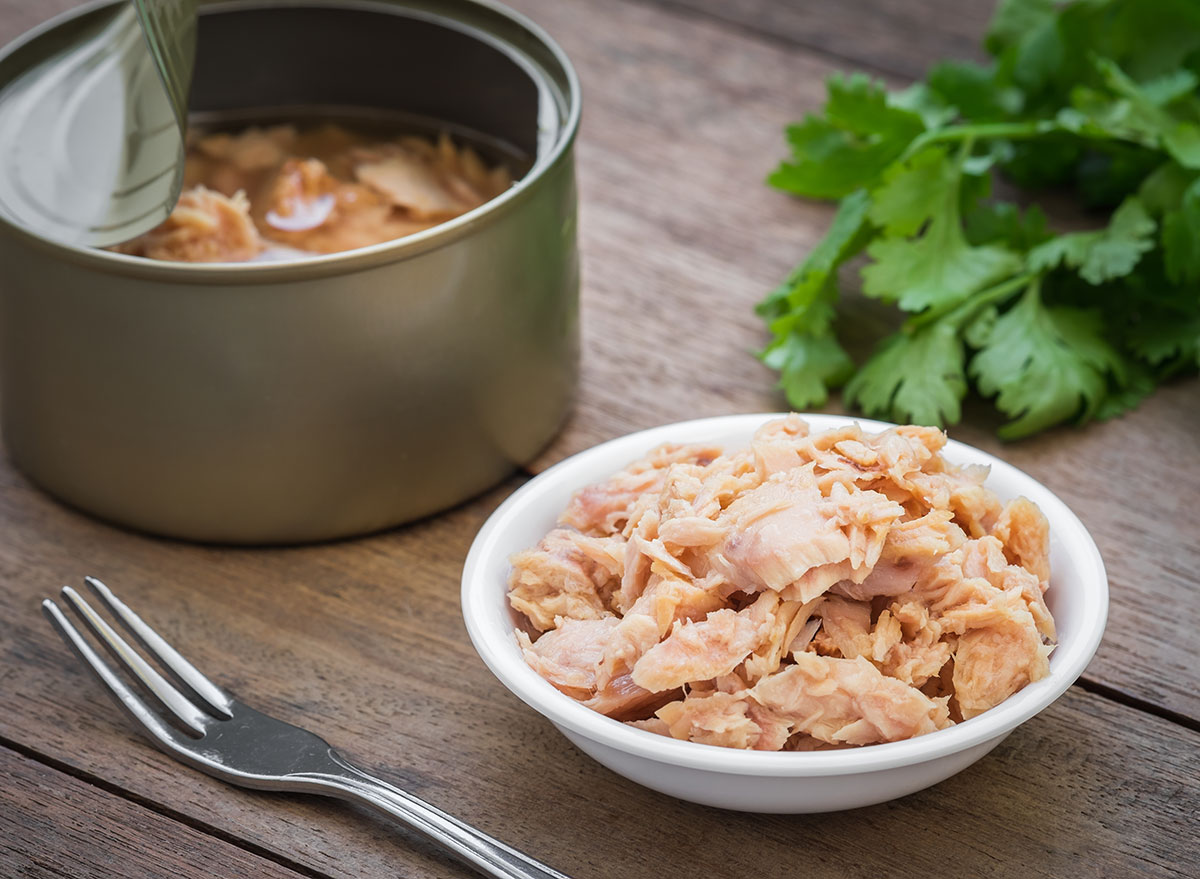
Sure, you want to get your heart-healthy omega 3 fatty acids, and canned tuna is a terrific source. But "at an average of 200 to 300 milligrams of sodium per serving, anyone who has heart disease or diabetes can't risk eating canned tuna," says nutritionist Cassidy Gunderson, PhD, owner of Spiro Health & Wellness, in Salt Lake City. While canned tuna isn't as salty as canned soup, it like baked goods, snack foods, and frozen dinners can raise your risk of high blood pressure and other disorders like kidney disease and diabetes, she says.
Burritos and tacos
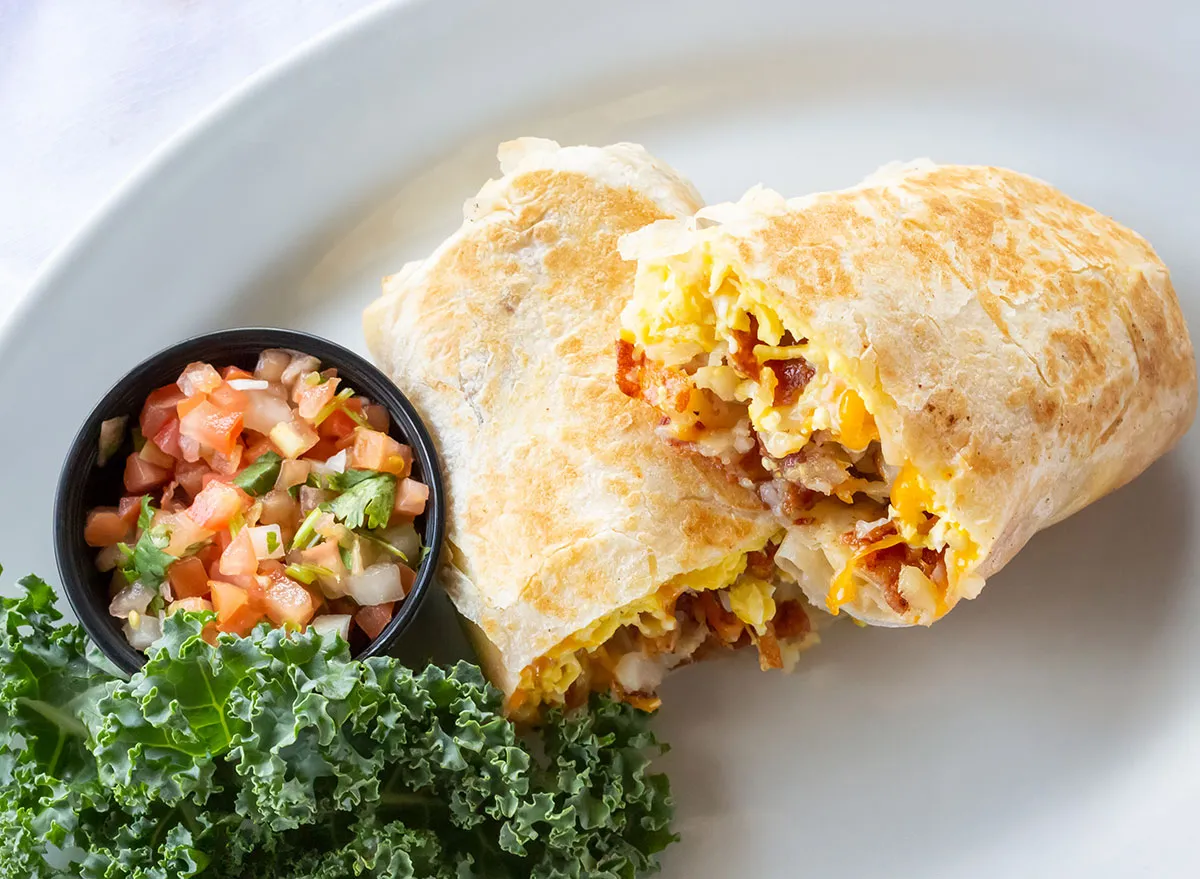
Those tasty burritos at your favorite taco joint contain about 1,000 milligrams of sodium, the tacos a little less. But that's par for the course for most restaurant fare. (For a taste, check out The 36 Saltiest Restaurant Meals.) If you have high blood pressure, be careful about the frequency of your dining out and try to eliminate or limit processed foods. "Small reductions like these can decrease your blood pressure by [a significant amount]," says Gretchen San Miguel, MD, chief medical officer for Medi-Weightloss. "While you can't completely eradicate salt from your diet, eating potassium-rich foods like fish, avocados, bananas and vegetables will do wonders to help limit its negative effects."
For more tips on avoiding the dangers of high sodium from doctors, read Proven Ways to Lover Your Blood Pressure Now.
